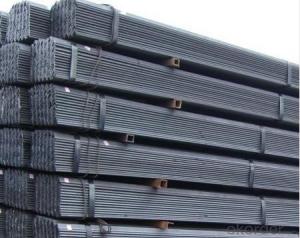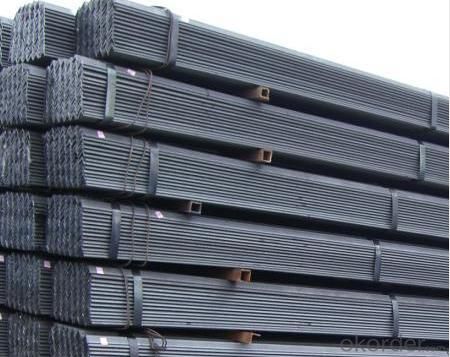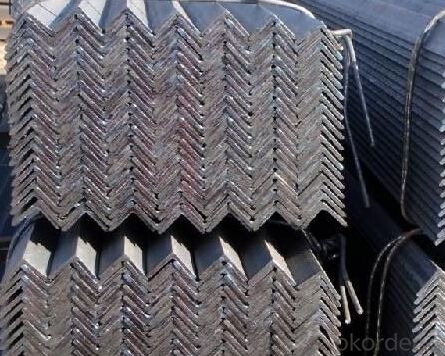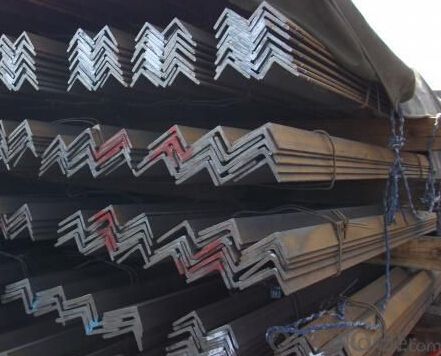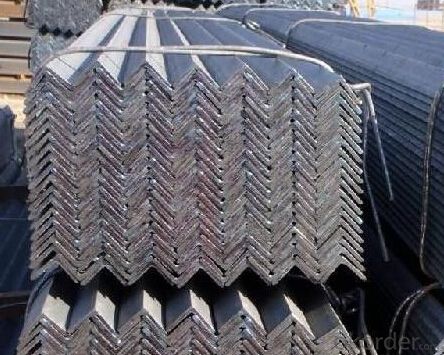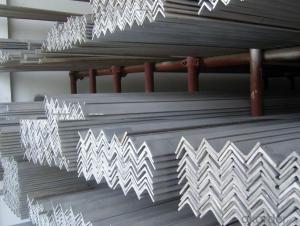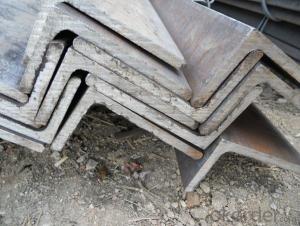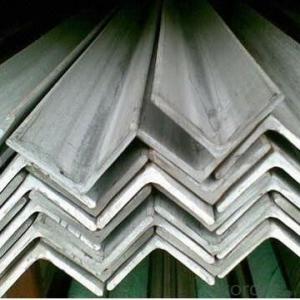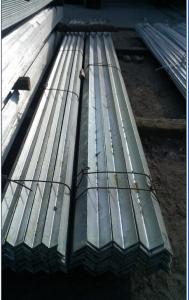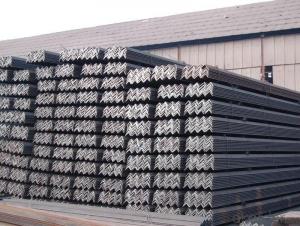GB235/275 A36 Angle Steel
- Loading Port:
- China Main Port
- Payment Terms:
- TT or LC
- Min Order Qty:
- -
- Supply Capability:
- -
OKorder Service Pledge
OKorder Financial Service
You Might Also Like
Product Description:
OKorder is offering GB235/275 A36 Angle Steel at great prices with worldwide shipping. Our supplier is a world-class manufacturer of steel, with our products utilized the world over. OKorder annually supplies products to European, North American and Asian markets. We provide quotations within 24 hours of receiving an inquiry and guarantee competitive prices.
Product Applications:
GB235/275 A36 Angle Steel are ideal for structural applications and are widely used in the construction of buildings and bridges, and the manufacturing, petrochemical, and transportation industries.
Product Advantages:
OKorder's GB235/275 A36 Angle Steel are durable, strong, and resist corrosion.
Main Product Features:
· Premium quality
· Prompt delivery & seaworthy packing (30 days after receiving deposit)
· Corrosion resistance
· Can be recycled and reused
· Mill test certification
· Professional Service
· Competitive pricing
Specifications of GB235/275 A36 Angle Steel
1. Standards: GB,ASTM,BS,AISI,DIN,JIS
2. Invoicing on theoretical weight or actual weight as customer request
3. Material:Material: GB Q235B, Q345B or Equivalent; ASTM A36; EN 10025, S235JR, S355JR; JIS G3192, SS400; SS540.
4. Sizes:
Sizes: 25mm-250mm | ||
a*t | ||
25*2.5-4.0 | 70*6.0-9.0 | 130*9.0-15 |
30*2.5-6.6 | 75*6.0-9.0 | 140*10-14 |
36*3.0-5.0 | 80*5.0-10 | 150*10-20 |
38*2.3-6.0 | 90*7.0-10 | 160*10-16 |
40*3.0-5.0 | 100*6.0-12 | 175*12-15 |
45*4.0-6.0 | 110*8.0-10 | 180*12-18 |
50*4.0-6.0 | 120*6.0-15 | 200*14-25 |
60*4.0-8.0 | 125*8.0-14 | 250*25 |
5. Material details:
Alloy No | Grade | Element (%) | |||||
C | Mn | S | P | Si | |||
|
|
|
|
|
|
| |
Q235 | B | 0.12—0.20 | 0.3—0.7 | ≤0.045 | ≤0.045 | ≤0.3 | |
|
|
|
|
|
|
| |
Alloy No | Grade | Yielding strength point( Mpa) | |||||
Thickness (mm) | |||||||
≤16 | >16--40 | >40--60 | >60--100 | ||||
≥ | |||||||
|
|
|
|
|
| ||
Q235 | B | 235 | 225 | 215 | 205 | ||
Alloy No | Grade | Tensile strength (Mpa) | Elongation after fracture (%) | ||||
Thickness (mm) | |||||||
| ≤16 | >16--40 | >40--60 | >60--100 | |||
≥ | |||||||
|
|
|
|
|
|
| |
Q235 | B | 375--500 | 26 | 25 | 24 | 23 | |
Usage & Applications of GB Q235 Angle Steel
Trusses;
Transmission towers;
Telecommunication towers;
Bracing for general structures;
Stiffeners in structural use.
Packaging & Delivery of GB Q235 Angle Steel
1. Transportation: the goods are delivered by truck from mill to loading port, the maximum quantity can be loaded is around 40MTs by each truck. If the order quantity cannot reach the full truck loaded, the transportation cost per ton will be little higher than full load.
2. With bundles and load in 20 feet/40 feet container, or by bulk cargo, also we could do as customer's request.
3. Marks:
Color mark: There will be color marking on both end of the bundle for the cargo delivered by bulk vessel. That makes it easily to distinguish at the destination port.
Tag mark: There will be tag mark tied up on the bundles. The information usually including supplier logo and name, product name, made in China, shipping marks and other information request by the customer.
If loading by container the marking is not needed, but we will prepare it as customer request.
FAQ:
Q1: Why buy Materials & Equipment from OKorder.com?
A1: All products offered byOKorder.com are carefully selected from China's most reliable manufacturing enterprises. Through its ISO certifications, OKorder.com adheres to the highest standards and a commitment to supply chain safety and customer satisfaction.
Q2: How do we guarantee the quality of our products?
A2: We have established an advanced quality management system which conducts strict quality tests at every step, from raw materials to the final product. At the same time, we provide extensive follow-up service assurances as required.
Q3: How soon can we receive the product after purchase?
A3: Within three days of placing an order, we will begin production. The specific shipping date is dependent upon international and government factors, but is typically 7 to 10 workdays.
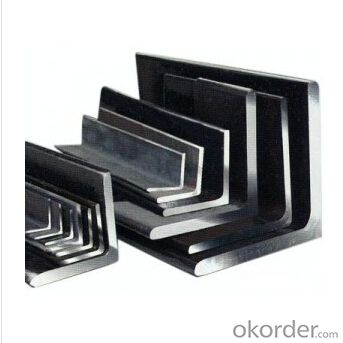

- Q: How do steel angles compare to other structural shapes?
- Steel angles are versatile structural shapes that offer several advantages compared to other shapes. They provide excellent structural support and stability due to their L-shaped profile, making them ideal for applications such as braces, frames, and supports. Their unique design allows for easy connection and welding, which facilitates quick and efficient construction. Additionally, steel angles are cost-effective and readily available, making them a popular choice in the construction industry. They can be used in a variety of projects, ranging from small-scale residential buildings to large-scale industrial structures. Overall, steel angles offer a reliable and efficient solution for structural needs.
- Q: Can steel angles be used in transportation or infrastructure projects?
- Yes, steel angles can be used in transportation or infrastructure projects. Steel angles are commonly used in construction due to their strength and durability. They are often used to provide structural support and stability in various applications such as bridges, buildings, highways, and railways. In transportation projects, steel angles can be used for constructing vehicle ramps, guardrails, and support structures for overhead signs. In infrastructure projects, they can be used for constructing retaining walls, foundations, and supporting structures for utility installations. The versatility and reliability of steel angles make them a popular choice in these types of projects.
- Q: How do steel angles perform under cyclic loading?
- Steel angles are widely used in various structural applications due to their excellent strength and stiffness properties. When subjected to cyclic loading, which refers to repeated loading and unloading cycles, steel angles perform exceptionally well. Under cyclic loading, steel angles exhibit a phenomenon known as fatigue, which is the progressive and localized structural damage that occurs when a material is subjected to repeated loading and unloading. However, steel angles have a high fatigue resistance, making them highly suitable for applications where cyclic loading is expected. The key factor contributing to the performance of steel angles under cyclic loading is their material properties. Steel, being a ductile and resilient material, is able to deform and absorb energy under cyclic loading, thereby preventing the accumulation of stress concentrations that could lead to failure. Moreover, steel angles are typically designed with a sufficient factor of safety to withstand cyclic loading without compromising their structural integrity. This ensures that they can endure numerous cycles of loading and unloading without experiencing significant deformation or failure. In addition to their inherent material properties, the structural design and fabrication of steel angles also play a crucial role in their performance under cyclic loading. Proper design, including consideration of the expected loading conditions and appropriate reinforcement, ensures that steel angles can withstand cyclic loading without experiencing excessive deformation or stress concentrations. Overall, steel angles are well-suited for applications involving cyclic loading due to their high fatigue resistance, ductility, and structural design considerations. Their ability to withstand repeated loading and unloading cycles makes them a reliable and durable choice in various structural systems.
- Q: Can steel angles be used as supports for mechanical or HVAC ducts?
- Yes, steel angles can be used as supports for mechanical or HVAC ducts. Steel angles are commonly used in construction and engineering as they provide structural support and stability. They are strong and durable, capable of withstanding heavy loads and maintaining their shape over time. When properly installed, steel angles can effectively support the weight of mechanical or HVAC ducts, ensuring that they stay in place and do not sag or collapse. Additionally, steel angles can be easily customized and adjusted to fit specific duct sizes and configurations. Overall, steel angles are a reliable and cost-effective solution for supporting mechanical or HVAC ducts.
- Q: How do steel angles perform under fatigue or repeated loading conditions?
- Due to their ability to endure repeated loading conditions, including fatigue, steel angles are widely used in structural applications. The fatigue performance of steel angles is influenced by various factors, such as material properties, design, and loading conditions. Typically, high-strength steel is used to manufacture steel angles, which possess outstanding fatigue resistance. These steels have a high fatigue strength, allowing them to withstand numerous cycles of loading before failure occurs. The fatigue strength of steel angles can be enhanced further by implementing techniques like heat treatment or surface hardening. The geometry of the steel angle is a critical aspect in its fatigue performance. Sharp corners or notches can act as points of stress concentration, leading to accelerated initiation and propagation of fatigue cracks. Hence, it is crucial to consider factors like fillet radii and smooth transitions when designing steel angles for applications prone to fatigue. The fatigue behavior of steel angles is also influenced by the loading conditions. The magnitude and frequency of applied loads, along with additional factors like corrosion or temperature variations, can impact the fatigue life of the angles. Comprehensive analysis and testing are necessary to determine the expected fatigue life and ensure the dependable performance of steel angles under repeated loading conditions. Overall, steel angles are renowned for their exceptional performance under fatigue or repeated loading conditions. By considering material properties, design factors, and loading conditions, engineers can optimize the fatigue resistance of steel angles for specific applications, guaranteeing their long-term durability and reliability.
- Q: How are steel angles measured and specified?
- Steel angles are measured and specified based on their dimensions, which include the length of the legs and the thickness of the angle. This is typically provided in millimeters or inches. The dimensions are presented in a specific order, such as leg length × leg length × thickness. Additionally, the angle's weight per unit length or its cross-sectional area may also be specified to provide further information about its size and strength.
- Q: What are the common defects or issues found in steel angles?
- Some common defects or issues found in steel angles include surface imperfections such as cracks, scratches, or dents, dimensional variations such as uneven or inconsistent lengths, widths, or thicknesses, and improper alignment or straightness. Other issues can include corrosion, rusting, or lack of proper coating, as well as inadequate welding or joining, leading to weak or compromised structural integrity.
- Q: What is the typical thickness tolerance for steel angles?
- The typical thickness tolerance for steel angles can vary depending on the specific manufacturing standards and requirements. In general, the thickness tolerance for steel angles is typically within a range of +/- 0.005 to 0.010 inches (0.13 to 0.25 mm). However, it is important to note that this tolerance can also be influenced by the size and dimensions of the angle. Larger and thicker steel angles may have slightly looser tolerances compared to smaller and thinner angles. It is always recommended to consult the relevant industry standards or specifications to determine the specific thickness tolerance for a particular steel angle.
- Q: What are the different standards for steel angles?
- Steel angles, commonly used in construction and industrial applications, adhere to various standards to meet specific requirements. The American Society for Testing and Materials (ASTM) standard, specifically ASTM A36, is widely recognized and specifies the chemical composition, mechanical properties, and tolerances of steel angles. This standard is suitable for general structural purposes and is available in different sizes and lengths. Similarly, the European standard, known as EN 10025, encompasses multiple grades of steel angles, including S235, S275, and S355, which correspond to different yield strengths. These angles find extensive use in construction, machinery, and engineering industries throughout Europe. Country-specific standards also exist, such as the Japanese Industrial Standards (JIS) and the British Standards (BS). JIS G3101, a renowned standard in Japan, outlines the specifications for hot-rolled steel angles used in general structures. Meanwhile, BS EN 10056, a British standard, provides specifications for steel angles employed in construction. Furthermore, specialized standards cater to specific applications, such as marine-grade steel angles that withstand corrosion in saltwater environments. These standards, like ASTM A588, impose additional requirements for chemical composition and mechanical properties to ensure durability in harsh conditions. In conclusion, the diversity of steel angle standards guarantees that these structural shapes fulfill precise requirements regarding strength, durability, and compatibility with various construction and industrial applications. To ensure compliance with necessary specifications, it is crucial to consult the appropriate standard when selecting steel angles.
- Q: How are steel angles installed on concrete structures?
- Steel angles are typically installed on concrete structures using anchor bolts. These anchor bolts are drilled into the concrete and then the steel angles are placed over these bolts. Nuts and washers are then tightened onto the anchor bolts to secure the steel angles in place.
Send your message to us
GB235/275 A36 Angle Steel
- Loading Port:
- China Main Port
- Payment Terms:
- TT or LC
- Min Order Qty:
- -
- Supply Capability:
- -
OKorder Service Pledge
OKorder Financial Service
Similar products
Hot products
Hot Searches
Related keywords
